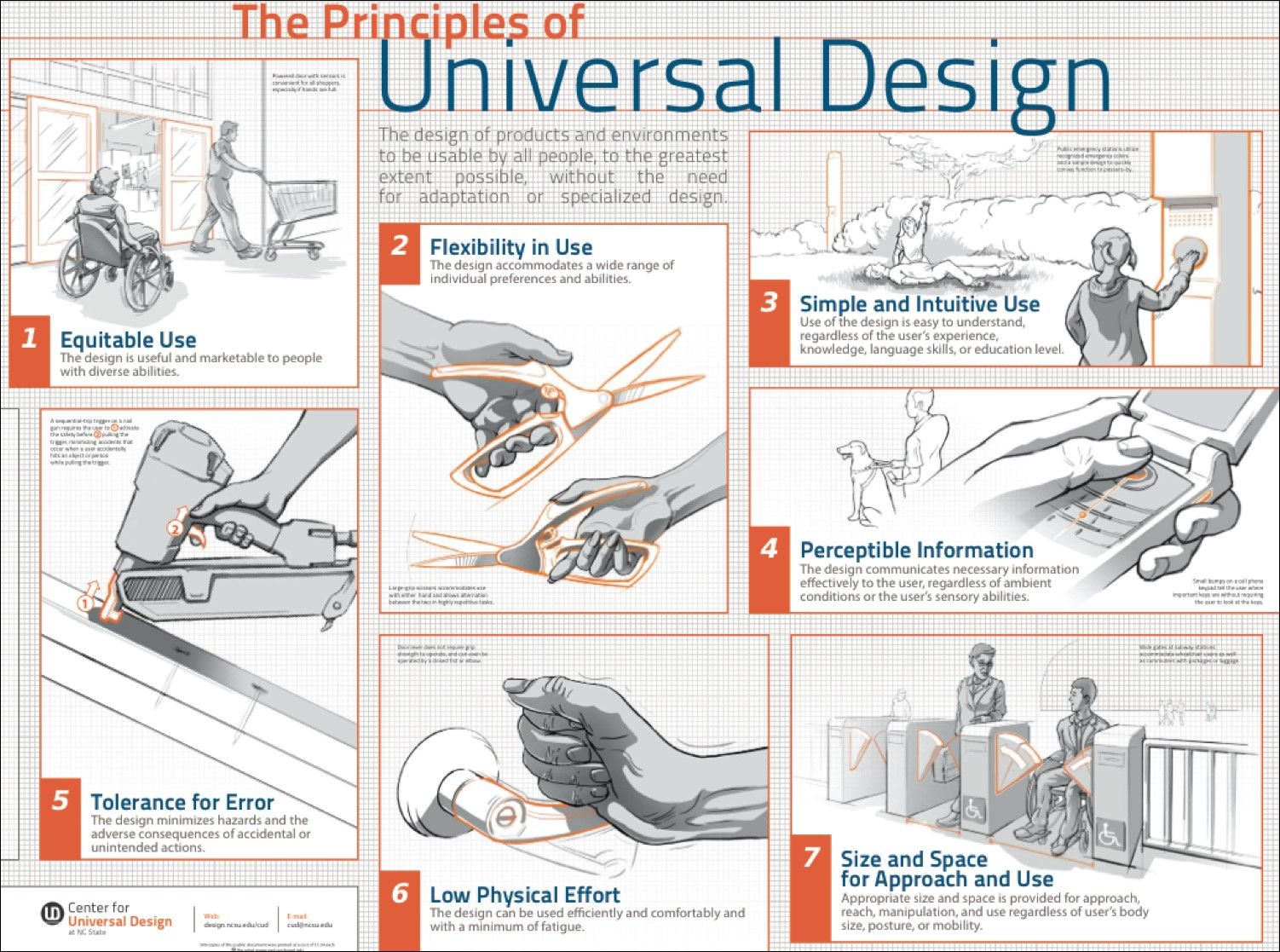Information and communications techologies must be made equally accessible to people with physical, sensory, or cognitive disabilities
Smart phones, computers, digital documents, web-based applications, etc., all these should be readily available and accessible by people these impairments

Guidelines as to how to design for higher accessibility
The design is useful and marketable to people with diverse abilities.
The design accommodates a wide range of individual preferences and abilities.
Use of the design is easy to understand, regardless of the user's experience, knowledge, language skills, or current concentration level.
The design communicates necessary information effectively to the user, regardless of ambient conditions or the user's sensory abilities.
The design minimizes hazards and the adverse consequences of accidental or unintended actions.
The design can be used efficiently and comfortably and with a minimum of fatigue.
Appropriate size and space is provided for approach, reach, manipulation, and use regardless of user's body size, posture, or mobility.
The Good:
The Bad:
Neat Links:
Common Accessibility Problems: Good and Bad Examples in Modern Websites